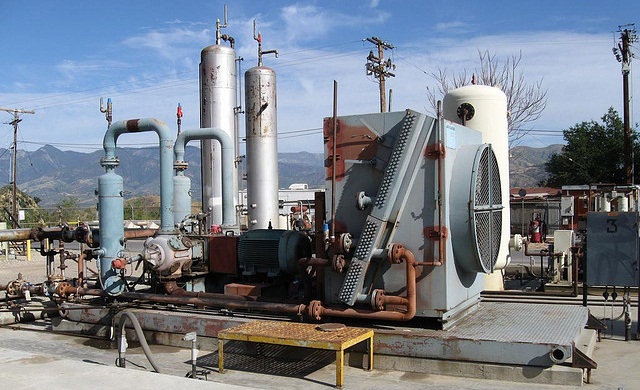LNG is liquefied natural where it is reduced by cooling at -162C to 1/600th of its normal volume. CNG, compressed natural gas, and LNG, are both methods for transporting gas to where it is needed. The problem that is both need heavy investment in infrastructure to allow the stranded gas to be monetised where the demand is – and in the case of LNG you have to transport it, liquefy it, transport it again and then regasify it. It’s an industry reliant on government policy, heavily vested in the cloak and dagger world of geopolitics, with a few interesting curve balls to come.

LNG Demand
Historical growth rates have been in the order of 6% from 1990-2012 and this trend is expected to continue up until 2020. Last year there was a slight pull back in the market due to a drop in gas output, but overall analysts are expecting LNG trade to almost double from 240 mtpa by 2025.
The most important growth markets are of course China, which is expected to increase its imports from 20mtpa to just over 30mtpa by 2015 as it attempts to de-smog it’s cities. Other countries expected to come into play with rapid energy per capita growth with a gas angle are India, with the Krishna basin not being as productive as expected, alongside Argentina and Brazil, but a general gas age is looking likely.
LNG Supply
From ’09 to ’11 there was relative weakness in the market as Yemen and Qatar increased their market input by 10% annually – there was a 10% liquefaction overcapacity in these years. This trend started to change as Fukushima led Japan to shut its nuclear facilities and the general Asian thirst for gas caught up with the market firming prices.
Going forward, increasing Asian demand, is expected to be initially sated by Australia from 2014 onwards with its CBM and other projects in Queensland, Newcastle, Gladstone etc. The question is the next leg of growth from 2018 onwards, with East Africa and the US both reaching deadlines for policy outlining their intent. Tanzania is at the moment readjusting its Government gas policy – and the US and Canada have seen over 20 potential LNG projects, or 160 mtpa, put forward with Government weighing the pros and cons of jobs, gas price increases and deficit reductions. However the Chemical lobby is intent on using $4 gas to produce ethylene, so most will not make it.
Pricing
Prices are startingly different for gas globally – recent April prices show Japan is the highest at $17 per MMbtu, India at just under $16, the UK at $10, and the US at $3-4. Asian prices due their complete lack of supply have been priced at a disadvantage by being indexed to oil, whilst the US has all its unconventional shale and CBM localised and low cost.
Traditional pricing in Asian LNG markets is potentially under threat, and this has been the main talking point, or stop talking point, of Sino-Russian negotiations regarding the gas pipeline into China. The crux of the matter lies in indexation and a change from the historical precedence of it being oil linked, and at such a premium to Zeebrugge or Henry Hub prices.
Rumours are Gazprom were looking for $300 per mcm and the Chinese at $250 per mcm with a total annual throughput of 38 bcm. Coupled with that, the Russians wanted Chinese Export Bank financing the pipeline, similar to that of Rosneft in ‘08, and Tanesco in Tanzania this year with the Mtwara Dar pipeline of 780scf/d. It’s becoming clearer that Russia’s game to play Europe against China on pricing is becoming more one of desperation, as prolific gas finds in the Levant basin, and security from growth in LNG markets, specifically Australia, have left them with a weakening hand.
Furthermore the rise of US, Australian and African gas resources, conventional and unconventional, alongside technological advances in mobile infrastructure, make the future market structure more uncertain. In the next ten years, bets are on for a gradual move away from long term contracts as a more fungible, interconnected, nomadic gas market deloclalises and converges global gas markets and prices.
Threats to pricing and the Traditional Model
1. One threat to pricing is Japan and Abe switching back on its nuclear power programmes. One apt quote is that they “rigorously analysed the effects of earthquakes but looked at “fables” for planning against Tsunami risk”. The conclusion to the accident being that their backup generators for coolant circulation were swamped after the main power supply was lost – All of which should be easily rectifiable going forward and was simply a known unknown that was badly managed. Abe seems to be pushing this agenda despite 60% of the populace wanting to phase out nuclear power by 2040.
2. Conventional global gas discoveries have been increasing as computing power, seismic technology and interpretation capability have come into play. Gas seems to be getting easier to find, which might have something to with advanced AVO techniques for gas showing clearer reservoir signals due to the boundary and gas reservoir acoustic impedance levels being more easily distinguished. From 2010 to 2012, O&G discoveries have been well above trend and 60% have been gas finds, 70% last year.
3. Unconventional gas – CBM and Shale gas, and the hydrate possibility are also potential game changers going forward, although the latter will be some way off. Even so, Eastern European, Indian and Chinese potential, although the more brittle coals of the Ordos basin and Green Dragon Gas (LSE:GDG) have been a continuous jam tomorrow story since majors took the fields in the 90’s, shale and tight sand gas is a left of field factor to watch out for, just as it has revolutionised the American energy story.
4. A mobile gas LNG Infrastructure – The problems with the present LNG industry is the heavy capital cost of infrastructure, long lead and long planning times. One new theme that is entering the market is Floating liquefaction and regasification facilities, such as Shell’s prelude, being built by Samsung Heavy for northern Australia and 5.3mtpa of production in 2017. Gasification ships are already out there and just park in a berth at a port and then dock to any LNG carrier and unload it into the local market, but Floating liquefaction facilities are still to make their mark, with Companies such as Golar, Daewoo, Doosan, Keppel, in or looking at FEED stage analysis. Although the present cost is about twice that per ton per annum of land based facilities ($2300) and there are significant hurdles to producing such assets (fitting a traditional facility into 25% of the space), the floating liquefaction and regasification story looks set to revolutionise the industry by unlocking previously non-commercial fields.
5. Sticking to Budget and Time – Steel and skilled labour have been playing havoc with LNG capital costs from regasification to transport and liquefaction. In Australia Liquefaction budget costs have overrun by 50% in general, reducing ROI’s from 20% to 10%. The rise in the cost of steel – an integral element of low temperature industry due to its non-brittle nature – has been one of the main reasons in the doubling of cost of LNG carriers in last few years, after a steady decade of decline due to the competition of Korean and Singapore based shipbuilders. Furthermore industry lead times are often underestimated for land based facilities – for example Nigeria’s 25mtpa took 12 years to get up and running. As such, the plans of Eni and Anadarko to produce 50mtpa by 2018 in Mozambique, do look a little overly ambitious.
Conclusion
The global gas market is set to change as new resources are discovered and reserves brought online. The LNG market is slow moving and prices are set for cyclical firming and softening in conjunction with new regional projects coming online. This is all a great game of Geopolitics and energy security that is dependent on government initiatives to form the basic playing field: From Russia’s weakening hand to Japan’s nuclear stance, Obama’s decision to export and how much, and from the players of tomorrow, such as the Tanzanian governments new policy and the neo-colonialist approach of China in Africa. Even so improved technology in finding gas, both conventional and unconventional, means there is room for technological innovation in extraction and transportation to shift the pricing dynamics away from traditional methods and an element of convergence to take hold.

 Hot Features
Hot Features











